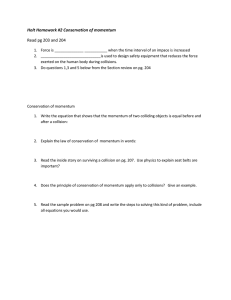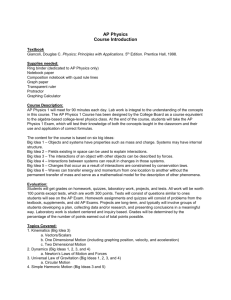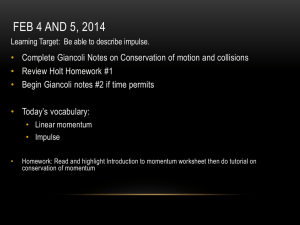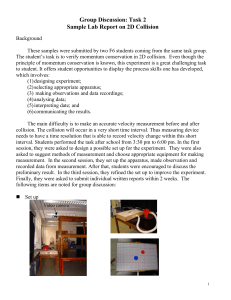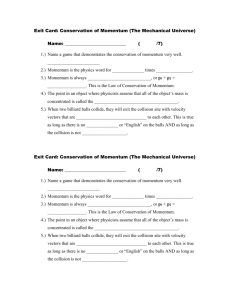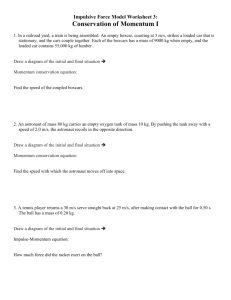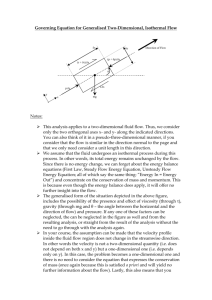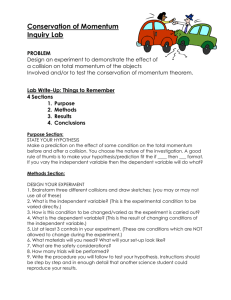ConservationLaw
advertisement
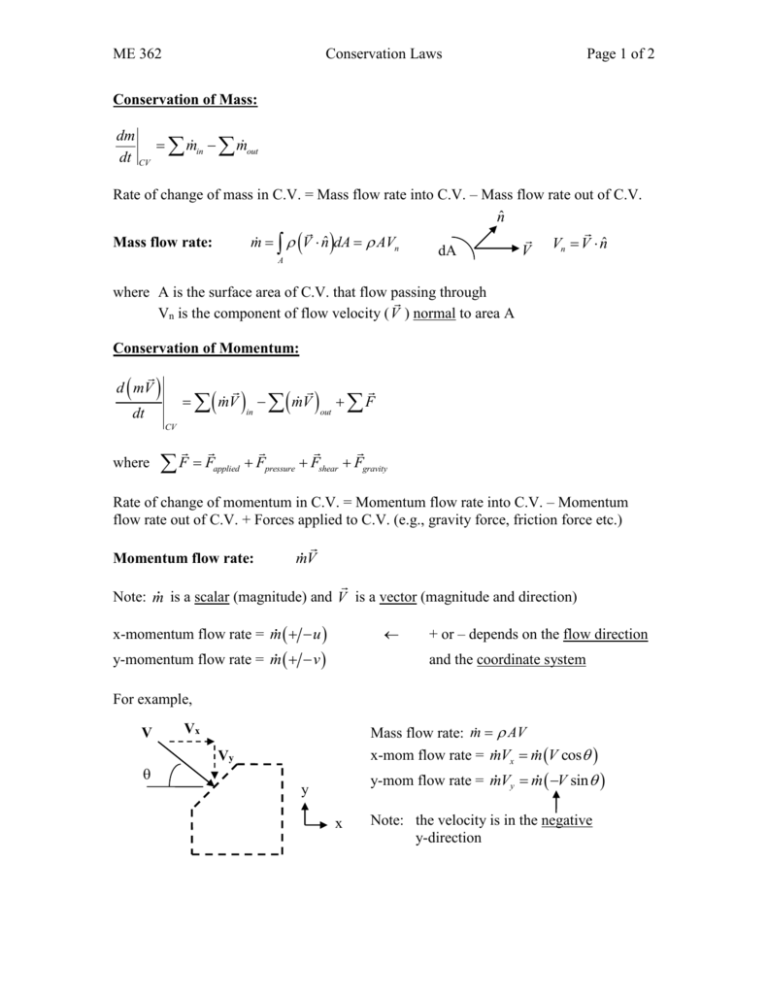
ME 362 Conservation Laws Page 1 of 2 Conservation of Mass: dm min mout dt CV Rate of change of mass in C.V. = Mass flow rate into C.V. – Mass flow rate out of C.V. n̂ m V nˆ dA AVn Mass flow rate: A dA V Vn V nˆ where A is the surface area of C.V. that flow passing through Vn is the component of flow velocity ( V ) normal to area A Conservation of Momentum: d mV mV mV dt in out F CV where F F applied Fpressure Fshear Fgravity Rate of change of momentum in C.V. = Momentum flow rate into C.V. – Momentum flow rate out of C.V. + Forces applied to C.V. (e.g., gravity force, friction force etc.) Momentum flow rate: mV Note: m is a scalar (magnitude) and V is a vector (magnitude and direction) x-momentum flow rate = m u y-momentum flow rate = m v + or – depends on the flow direction and the coordinate system For example, V Mass flow rate: m AV x-mom flow rate = mVx m V cos Vx Vy y-mom flow rate = mVy m V sin y x Note: the velocity is in the negative y-direction ME 362 Conservation Laws Page 2 of 2 Assumptions: Incompressible applies to liquid flows or low speed gas flows and are constant Steady flow d 0 (properties inside the C.V. do not change in time) dt Neglect gravity Fgravity 0 Neglect viscous Fshear 0 Neglect pressure Fpressure 0 (applicable when entire C.V. is exposed to atmospheric pressure only) Apply above assumptions to the governing equations of mass and momentum yields, Conservation of mass: m in m out V ) out (m V ) in Conservation of momentum: F (m

